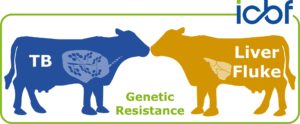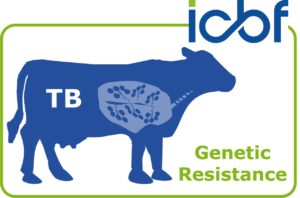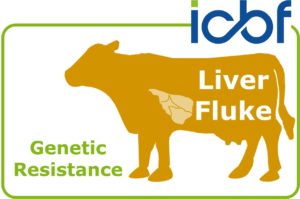
Breeding values for genetic resistance to tuberculosis (TB) and liver fluke infection are two new tools launched by ICBF in 2019 to help dairy and beef farmers to maintain healthier cattle. Cattle that are more resistant to TB or liver fluke infection have a greater ability to fight off TB or liver fluke infection due to their genetic make-up. Just as genetics dictates how well an animal can produce milk or gain weight, animal health is also under genetic control. Farmers can now breed cattle that are less likely to become infected with TB or liver fluke (i.e., more resistant), resulting in fewer TB reactors, fewer TB-breakdowns, and fewer cattle diagnosed with liver fluke infection.
Breeding for resistance to TB or liver fluke is complementary to existing control and eradication programmes which should accelerate the rate of TB removal from Ireland as well as reduce the prevalence of liver fluke without having any major negative ramifications on other traits. To achieve the most profitable and healthy herd select cows and bulls for breeding that have the highest overall index (i.e., EBI, Replacement Index, or Terminal Index) with the lowest breeding value (i.e., lowest predicted prevalence) for TB and liver fluke resistance.
Each animal’s breeding value for resistance to TB is expressed as the predicted prevalence of TB in that animal’s progeny. Therefore, lower breeding values are more desirable. For example, a bull with a breeding value of 10% for resistance to TB is predicted to produce progeny where, on average, 1 in every 10 of his progeny will be diagnosed as a TB reactor, either during a whole-herd test or at slaughter.
For 2019, breeding values for genetic resistance to TB and liver fluke will only be available for AI bulls and they will not be accessible using the Animal Search tool. Over-time breeding values for genetic resistance to TB and liver fluke will eventually be incorporated into the EBI, Eurostar Indexes, animal profiles, reports etc.

Proofs Ranked on the Predicted Prevalence of TB
| Dairy AI bulls | Beef AI bulls |
|---|---|
| Active bulls: EBI ≥ €200 | Active bulls: 5 star Replacement/Terminal Index |

Proofs Ranked on the Predicted Prevalence of Liver Fluke
| Dairy AI bulls | Beef AI bulls |
|---|---|
| Active bulls: EBI ≥ €200 | Active bulls: 5 star Replacement/Terminal Index |
ICBF would like to acknowledge the role of the Beef Health Check programme in contributing to this work
